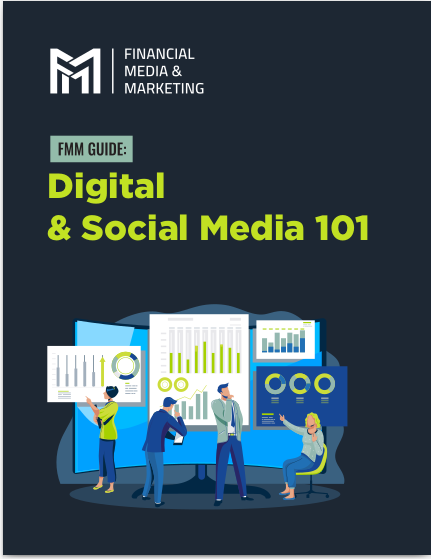Key Takeaways:
-
Prioritizing client relationships and targeted lead generation ensures a steady sales pipeline.
-
Structuring your workflow with the right techniques and strategies keeps you focused on high-value tasks.
Build a Strong Foundation with Clear Goals
Your sales pipeline needs a solid foundation to thrive. Setting clear goals allows you to understand what success looks like and ensures your focus remains on what truly matters. Start by defining measurable objectives, such as the number of new leads to generate weekly or the percentage of prospects to convert monthly. Goals give your pipeline direction, ensuring your efforts are purposeful and effective.
Break Down Objectives into Actionable Steps
Once you’ve set your goals, break them down into smaller, manageable actions. For example, if your goal is to onboard ten new clients per quarter, determine the number of leads to contact daily. These micro-actions create consistency, which is key to keeping your pipeline full over time.
Revisit Goals Regularly
Markets change, and so do client needs. Schedule monthly reviews to assess your progress and adjust your goals as necessary. Staying adaptable ensures your pipeline aligns with current opportunities.
Focus on High-Quality Leads
Not all leads are created equal. To maximize your time and effort, prioritize high-quality leads that are more likely to convert.
Define Your Ideal Client Profile
Create a detailed profile of your ideal client. Consider factors like financial needs, investment goals, and preferred communication styles. This helps you identify prospects that align with your expertise, making your outreach more effective.
Leverage Data to Segment Leads
Use available data to categorize your leads based on their likelihood to convert. A segmented list allows you to tailor your messaging, increasing engagement and improving conversion rates. For instance, segmenting by age group or income level can help you offer more relevant financial solutions.
Nurture Relationships for Long-Term Success
Building lasting relationships is key to maintaining a steady sales pipeline. Engage consistently with your prospects and clients to stay top of mind.
Personalize Communication
Make every interaction meaningful by personalizing your approach. Mention specific goals or challenges they’ve shared with you, and tailor your solutions accordingly. This personal touch fosters trust and deepens connections.
Utilize Regular Check-Ins
Schedule periodic check-ins to maintain contact without being overly sales-focused. For example, sending educational materials or industry updates positions you as a resource rather than just a salesperson.
Use Automated Tools Wisely
Automation can streamline repetitive tasks like follow-ups or email campaigns, freeing you to focus on personal interactions. However, ensure automation doesn’t compromise the human element that strengthens relationships.
Streamline Your Workflow for Maximum Efficiency
Balancing client engagement with lead generation requires efficient workflows. Optimize your processes to stay focused and productive.
Prioritize Tasks by Impact
Use the 80/20 rule: focus 80% of your energy on tasks that generate 20% of your results. Identify high-impact activities, such as closing deals or nurturing warm leads, and delegate or minimize less critical tasks.
Implement Time Blocking
Allocate specific time slots for different activities like prospecting, client meetings, and administrative work. This structured approach reduces distractions and ensures every aspect of your pipeline gets attention.
Embrace Technology
Customer relationship management (CRM) systems help you track interactions, set reminders, and manage follow-ups efficiently. Use these tools to ensure no lead falls through the cracks.
Develop a Consistent Lead Generation Strategy
A consistent inflow of leads is the lifeblood of a healthy sales pipeline. Diversify your lead generation efforts to maintain momentum.
Optimize Your Online Presence
Your website and social media profiles are often the first touchpoints for potential clients. Keep them updated and informative, showcasing your expertise in financial planning. Use call-to-action (CTA) buttons to encourage prospects to contact you directly.
Leverage Networking Opportunities
Attend industry events, seminars, or online forums to connect with potential leads. Networking helps you establish credibility and discover prospects who may not be actively seeking financial advice.
Encourage Referrals
Happy clients are your best advocates. Create a simple referral program to incentivize them to introduce you to their friends or colleagues. Word-of-mouth referrals often lead to high-quality prospects.
Educate and Empower Your Audience
Providing value upfront builds trust and positions you as a thought leader. An informed audience is more likely to engage with your services.
Host Educational Webinars
Webinars allow you to address common financial concerns while showcasing your expertise. Topics could include retirement planning, tax strategies, or investment diversification. End with a Q&A session to engage attendees and gather potential leads.
Share Valuable Content
Write articles, create videos, or publish infographics on topics relevant to your target audience. Sharing insights not only attracts new leads but also keeps existing clients engaged.
Use Email Campaigns Strategically
Send informative newsletters that address your audience’s pain points. Include actionable tips, success stories, and updates about your services to keep recipients interested and engaged.
Monitor and Improve Your Pipeline Performance
A well-maintained sales pipeline requires continuous monitoring and fine-tuning. Analyze your performance metrics to identify areas for improvement.
Track Key Metrics
Keep an eye on metrics like:
-
Lead conversion rates
-
Average time to close deals
-
Pipeline value (total potential revenue from active leads)
These indicators reveal the health of your pipeline and guide your optimization efforts.
Identify Bottlenecks
Pinpoint where prospects tend to drop off in your sales process. Common bottlenecks include unclear value propositions or slow follow-up times. Addressing these issues helps you move leads smoothly through the pipeline.
Test and Adapt Strategies
Experiment with different approaches to improve your results. For instance, test various email subject lines or adjust your outreach schedule to determine what resonates most with your audience.
Keep Your Focus on the Bigger Picture
While managing the day-to-day tasks of maintaining a sales pipeline, it’s easy to lose sight of long-term goals. Stay grounded by focusing on what truly matters.
Align Activities with Core Values
Ensure your actions reflect your mission and values. This consistency builds trust with clients and helps you attract like-minded leads.
Celebrate Milestones
Recognizing your achievements, whether big or small, keeps you motivated. Celebrate reaching goals like hitting a new revenue target or successfully implementing a new lead generation strategy.
Stay Resilient
Rejections and setbacks are inevitable. Use them as learning opportunities to refine your approach and grow stronger in your practice.
Driving Long-Term Growth with an Engaged Pipeline
Your sales pipeline isn’t just a list of leads—it’s a dynamic system that reflects your efforts and priorities. By focusing on quality interactions, streamlining your workflow, and staying adaptable, you’ll ensure consistent growth and long-term success in your financial advising career.










